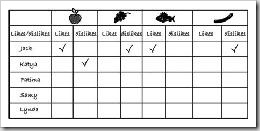One of every teacher's aspirations is to get his students involved and motivated. What is better than to see your students actively learning and having fun while they are doing it? But, how can you do it? You think you tried every possible stratagem and that just falls short. But, wait! Maybe you haven't tried these tried-and-proved tips yet:
1-Be motivated yourself and show your enthusiasm. It is a contagious disease and once your have it, your students will catch it.
2-Make sure your classroom is a cheerful environment where students feel loved and cared for.
3-Try concrete activities and get your students involved in decorating the classroom, growing and watering plants (carrots, herbs, etc...). Help them to put stickers/ labels on each plant. Kids will feel they are part of the school and will look forward for your lessons.
4-Have your students participate in a "real" project like gathering fake money to buy an imaginary house, an imaginary doll, bike, etc..
5-Some teachers use “Fun Money": They gave them to their students as a reward for being responsible, calm, doing homework, helping their friends, etc... By the end of the week, these can be exchanged for real treats.
6-Invite guests from the local charity or volunteering communities to come to your classes.
7- Use a map to walk your students to the local museum or a national park.
8- Use a camera to videotape your classroom. Use it later to give feedback and to make your students aware of their behavior. Show them which behavior is appropriate and which is not.
9-From time to time, you can invite the students' parents to attend a stage performance by your students. This not only involves parents but also gives a real sense of achievement for the kids.
Example of ideas that can be done as project work:
For these activities you will need a display board to display kids' work
Making a family tree: It can be created with the help of the kids' family: You can bring photos of your family and show them how you can create your own family tree.
Creating an alphabet book for animals or fruit, etc… with animals beginning with letter A on the A page, etc... Have your kids sit in groups. Give each group a letter or two and animals' pictures to match and glue.
Food party: Make a list of safe and simple food recipes: Kids can bring bread, cheese and tomatoes, etc... Cut the tomatoes or eggs for them as they may cut themselves. Write instructions on the board.
Role play:Prepare simple dialogues beforehand. Kids love to imitate others and to perform: Have them play the role of the teacher with simple dialogues like: “sit down”, “Stand up”, “Open your books, please”. Have their partners act what he is told to do (sits down) encourage them and let other kids do that to (applause, saying: well done! etc…)
Handicrafts: Encourage your students to
-create something for their mom, dad or a family member (help by providing examples: a flower, a ring, a small jewelry box, etc...)
-Write a card for their mom, father for their birthday, etc...
-Celebrate their friends' birthdays by creating small cards with (happy birthday to their friend, I love you, thank you, etc...)
Games: They can be very successful with young learners if you apply them suitably. For instance, hide objects to be collected and arranged together by your learners like flash cards with pictures and corresponding labels.The kids find the words and stick them next to the corresponding names.
Drawing: Students can draw their house plan with the help of the family: kitchen on the right, living room on the right.Or they may draw a map and find their way to the kindergarten
Likes and dislikes book: Prepare a sheet for each group with the names of the other kids in other group(s): Encourage them to find what their friends like or dislike.
Later, you can ask your students to prepare a book using all these sheets.You can also make them count how many love what. They can draw a kind of statistics table, etc..
Theory that works:
Often you will find yourself in a situation where your students are more excited than you want them to be. Or they may get bored when you ask them to do a particular activity.
That is a usual situation. In fact, you can even turn that to your advantage! Activities can be divided into two types: “stir” and “settle” activities: Stir activities: can make the learners involved but it can make them over-excited and restless. Settle activities: they can calm a class down but it also can be boring.
How to use these to your advantage? You can make a list of those activities that “stir” students and those that calm them down. Use them when you think they are more appropriate: copying and coloring are rather “settling” activities while competitions are rather “stirrers”. Besides, some language skills can calm your kids down (listening) while others may excite them (speaking).
References:
Teaching English in The Primary Classroom by Susan Halliwell


2 comments:
Thank you very much indeed!!!Very useful tips!!and the main thing that they are very true to life, not a simple theory!!!some of them I'm already using, some were for me a very useful discovery!!anyway now I know that I am on the right way!!Thank you for doing this from all young teachers in the world!!!
Great!! Just what is said "make language learning useful", "learn by doing", "one teaches, two learn", and so on. Reflecting on our daily work, I quote: "We know that people cannot learn a language without plenty of opportunities to real language use."(Willis, 1996)
Post a Comment